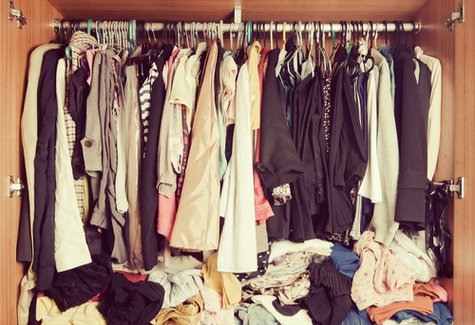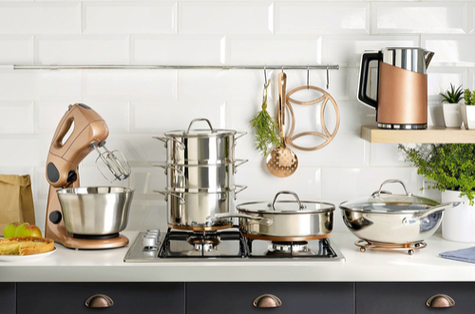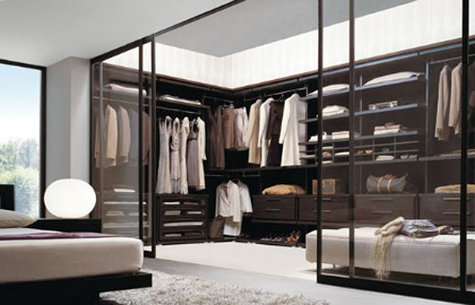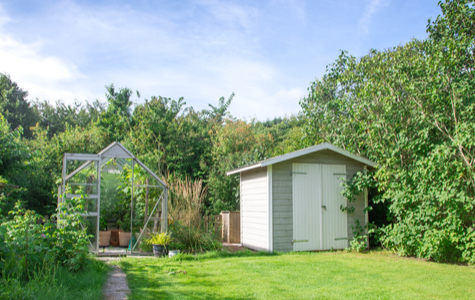
Is your new home bursting at the seams? If you still have a lot of boxes in your garage waiting to be unpacked, maybe now is the time to declutter. Having too many belongings can be overwhelming and draining. It can make keeping a home tidy and clean more difficult. It may also have a negative impact on both your physical and mental health[1].

What is clutter?
The dictionary definition of clutter is ‘a collection of things lying about in an untidy state.’ It can take many forms:
- Sentimental clutter (items from your past that have memories attached to them).
- Rubbish (items that need to be binned or recycled e.g. old flyers and magazines).
- Clutter without a home (items with no set storage space).
- Unused clutter (often sale items which still have their labels on).
- Abundance clutter (multiples of the same item e.g. 10 pairs of black jeans or 5 bottles of the same shampoo).
- Self-improvising clutter (items you bought for a new hobby that you have never used or have stopped using e.g. exercise bike, cookery book collection)

Decluttering is about sorting through your belongings and deciding what to keep and what to get rid of. Doing it speedily can help, as can asking yourself whether you ‘love it or need it?’ If you don’t, maybe it could be time for it to go.
Items can be recycled, donated to charity shops, regifted, sold online, given to friends or binned.


Sparking joy or 10 minutes method
You can come up with your own plan to declutter your home but if you want to follow the decluttering experts, there are two main ways you can do it. The Konmari method involves dealing with one type of clutter at a time, the first being your clothes. You go around your home collecting, pile everything together on the floor and then go through it – asking yourself if the items ‘spark joy.’
Any item that doesn’t, goes on the disregard pile and should be recycled or donated. The rest is then given its own home (storage space). This method of decluttering is about only keeping items that make you happy. It recommends that you tackle sentimental clutter last.

The 10-minute method involves spending 10 minutes a day tackling an area in your home, armed with two bags. In the first, you put items that need to be binned and in the second, items to be recycled, donated etc. In spending a small amount of time decluttering a day, you might find it more manageable and after a week you should start to see a difference. After a month, your home could potentially be clutter free.
You may find that doing a combination of the two methods works best for you, but you won’t know until you make a start. To help, we’ve got some suggestions of things you can get rid of in the main rooms in your home:


Kitchen
- Tins, jars and condiments that have passed their expiry dates or you have no intention of eating.
- Old plastic containers that are stained or missing their lids.
- Equipment you don’t use e.g. ice cream maker or bread maker.
- Cookery books that you haven’t read for six months or more.

Lounge/home office
- Pens that don’t work.
- Old notes.
- Magazines and newspapers that aren’t current.
- DVDs that you haven’t watched for a year or more.
- Books that you won’t read again, or if you do it’ll be years down the line.
- Old remote controls.
- Old batteries.

Bedroom
- Clothes that don’t ‘spark joy’.
- Odd socks
- Shoes and boots that you haven’t worn for years.
- Threadbare items (e.g. old underwear).
- Old bedding you don’t use.
- Sun cream and makeup that’s over a year old.

Outdoor spaces
- Old garden tools you’ve not used for a while.
- Plant pots you could donate to a friend.
- Unused children’s toys.
- Unwanted plant seeds or bulbs.




